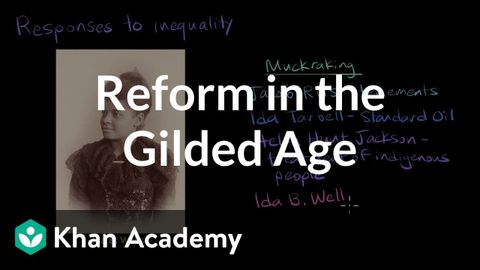
Subtitles & vocabulary
Reform in the Gilded Age | AP US History | Khan Academy
00
林宜悉 posted on 2020/03/27Save
Video vocabulary
period
US /ˈpɪriəd/
・
UK /ˈpɪəriəd/
- Noun (Countable/Uncountable)
- Set amount of time during which events take place
- A way to emphasize what you will say
A1TOEIC
More campaign
US /kæmˈpen/
・
UK /kæm'peɪn/
- Intransitive Verb
- To work in an organized, active way towards a goal
- Noun (Countable/Uncountable)
- Series of actions meant to achieve a goal
- A planned set of military activities intended to achieve a particular objective.
A2TOEIC
More revenue
US /ˈrevənju/
・
UK /'revənju:/
- Noun (Countable/Uncountable)
- Money that is made by or paid to a business
- Money a government collects from its people
A2TOEIC
More poverty
US /ˈpɑvəti/
・
UK /ˈpɔvəti/
- Uncountable Noun
- State of being poor
- Lack of something necessary
B1
More Use Energy
Unlock All Vocabulary
Unlock pronunciation, explanations, and filters
